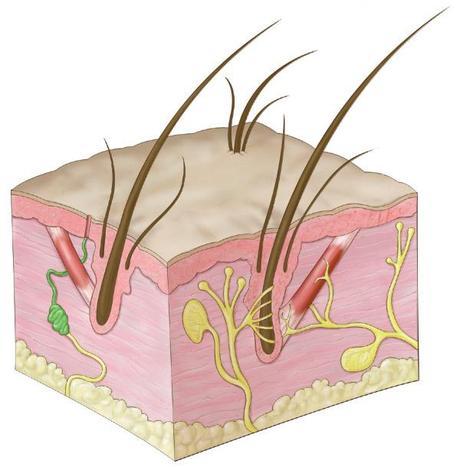Whatever the breed, dogs are carnivorous, athletic and, in general, characterized by these qualities:
- great powers of endurance
- exceptional hearing
- a superior sense of smell
- dense fur
- whiskers
- athleticism
Canines have four toes and nails on their front and back paws, plus a fifth toe, known as the dewclaw, that serves no useful purpose (dewclaws are absent on the front limbs of certain breeds). Dogs have 42 teeth – 20 in the upper jaw and 22 in the lower.
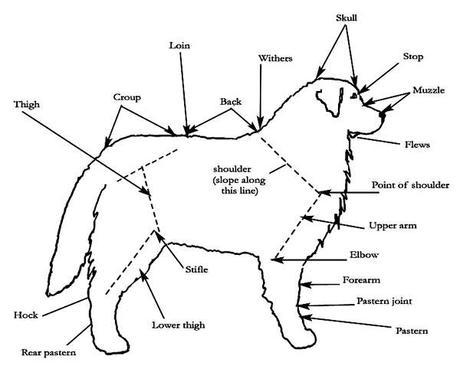
- image source
The Canine Body: Skeletal System
The skeleton comprises of semi-rigid framework that supports other softer structures. A system of efficient levers to aid movement comprises the bones of the spine, limbs, shoulders and pelvis, while the skull, ribcage and pelvis protect the major organs they contain.
Bones are joined together to form the skeleton via tendons and ligaments. Four distinct types of bone make up the canine skeleton: long, short, irregular, and flat bones. Each has a particular function.
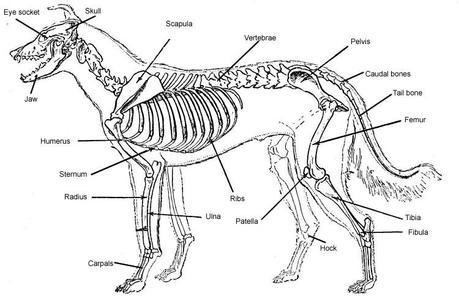
- image source
The Canine Body: Muscular System
Overlying the skeletal framework is a complex network of muscles that gives the dog its powerful and athletic movement and capacity for endurance as opposed to speed. There are three types of muscle in the canine body:
- striped (striated) muscles – known as the voluntary muscles
- smooth (unstiated) muscles – carry out muscular functions not under the dog’s voluntary control, such as the muscles of the intestines and walls of blood vessels
- specialized cardiac muscle – adapted to carry out the functions of the heart
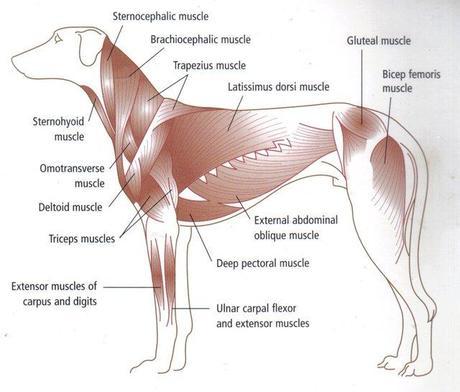
- image source
The Canine Body: Respiratory System
Respiration provides the dog’s body with oxygen that is vital for life, and expels waste products, in the form of carbon dioxide gas, from the blood. During respiration, the dog draws in air through his nasal passages via the nose and mouth.
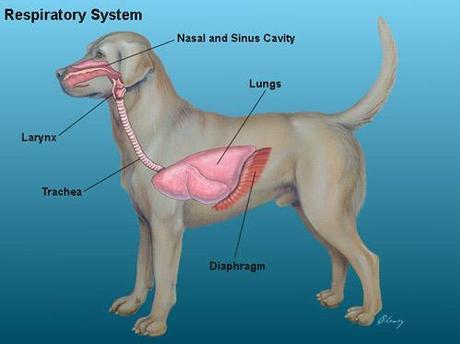
- image source
The Canine Body: Circulatory System
Every body cell needs a supply of nourishment, and this is delivered via the blood, which also removes waste products from the body. Blood comprises red blood cells and white blood corpuscles that are contained in a fluid called plasma.
Plasma contains platelets which contain a blood-clotting agent in the event of cuts and wounds. Red blood cells transport oxygen and nutrients derived from food, while white blood corpuscles collect and transport impurities and bacteria that have invaded the red cells.
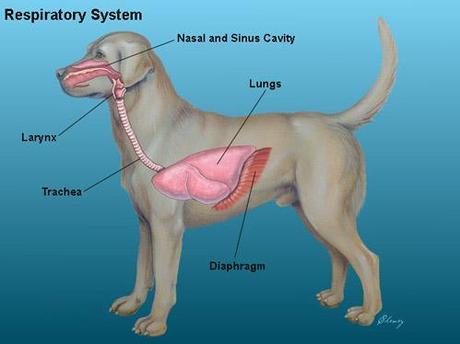
- image source
The Canine Body: Digestive System
To put it simply, the alimentary canal is a type of tube of varying size that runs through the dog from the mouth at one end, to the anal opening at the other. Food enters via the mouth and passes through the tube, where it is digested and all the available nutrients are extracted; what remains is the excreted.

- image source
The Canine Body: Skin and Fur
A thin layer of tissue, the skin, forms the natural outer covering of the dog’s body, and serves a number of functions:
- keeps out foreign bodies
- keeps in moisture
- regulates body temperature
- manufactures vitamin D
- protects against ultraviolet radiation via skin pigment and hair
- contains glands, and receptors for pain, temperature and pressure
Canine hair is formed from epidermis. It grows through a tube called the hair follicle. For each hair follicle, there’s a sebaceous gland which secretes an oily, semi-liquid substance (sebum) to lubricate and waterproof the hair and skin. These glands also produce a scent that the dog uses as a marker for his territory, as well as secrete chemical signals called pheromones that help attract members of the opposite sex.
